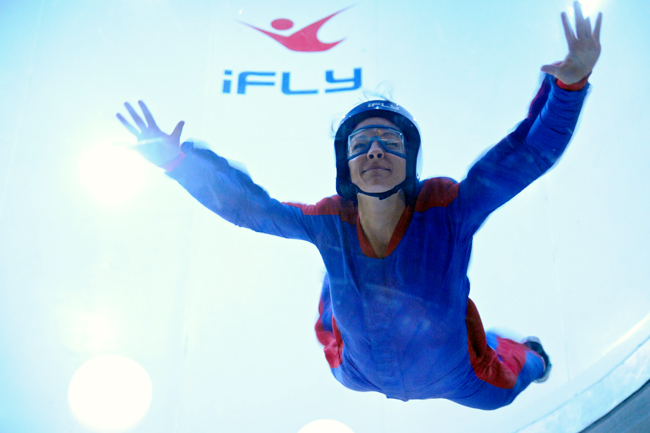For decades, jumping out of flying aircraft and diving toward Earth has been a necessity for the military and, more recently, an adrenaline sport for civilians. But for those who have a fear of heights, plummeting toward the ground at terminal velocity is out of the question. That’s where the newly opened iFly Austin comes into play.
An experiment originally intended for hardcore skydiving enthusiasts, iFly Austin allows participants, regardless of age or experience level, the opportunity to experience a simulated free-fall sensation. They tout that anyone is welcome to “fly,” from ages 3 to 103.”
What started as a method to train experienced skydivers eventually became a tourist and family attraction Stuart Wallock, chief marketing officer and UT alumnus, said.
“The dream came from a bunch of skydivers,” Wallock said. “Every time you pack a parachute and go up in the plane, you only have about 45 seconds of free fall to do all the formations and movements before you have to pull your parachute. The idea was that we need to build a tunnel that blows the same speed … That was the dream.”
The Austin-based company opened its first location in Orlando in 1997 and has grown to include 19 locations across America and abroad. The newly opened iFly Austin is the company’s most recent addition, opening its doors just over a month ago.
“It’s been packed ever since,” Wallock said. “We figured it was finally time to build a location here. Austin is home for us.”
Throughout the duration of a beginner flight, about one minute depending on the package purchased, an experienced instructor remains with students in the tunnel. These instructors give signals to students to help them maneuver their bodies correctly to fly in the tunnel.
“How you fly all depends on your body type, no two people are going to fly exactly the same,” instructor Javier Serrano said. “We observe how you move in the wind, and help you make adjustments to your body position to help you fly comfortably.”
For instructors it’s a fine science, observing flyers and helping them create lift. In a wind tunnel with average speeds of 115 miles per hour for beginners, students may not be focused on maintaining the posture taught in the preceding class. Even slight adjustments in the hands and feet alter the movement of the flyer, sending them up or down in the tunnel, or veering off toward the glass. But that’s what the instructors are there for: maintaining a sense of safety and stability, pulling wayward flyers back into a comfortable range.
It’s physically tiring, too: Holding the body a certain way in wind speeds of more than 100 miles an hour forces the muscles to work against the force of the wind, providing a small workout in the process. Still, iFly says that regardless of age or ability, just about anyone can have a good time.
“Our first priority is safety, but definitely a very close second is having fun,” Wallock said. “The best part is being able to see people have a good time. Especially those who think they can’t do it, like older fliers or people with disabilities, seeing them in there having a great time, that’s what makes this really awesome.”
Published on February 18, 2013 as "iFly offers skydiving for all ages".





















